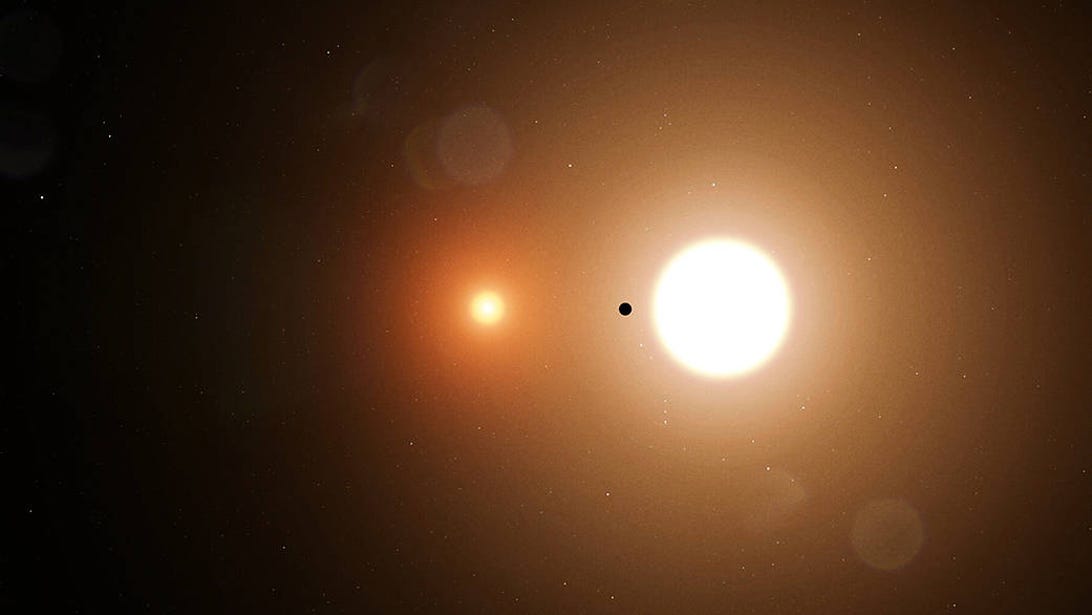
A binary system made up of one sun-like star and a smaller dwarf star.
NASAAstronomers say they have strong evidence that up to a quarter of all sun-like stars might have a nasty habit of making massive meals out of planets in their systems. But don't worry. This turns out to be good news for our chances of becoming a stellar snack and could even be helpful in the search for another Earth elsewhere in the cosmos.
In recent years, as scientists have studied more binary star systems, in which two sibling stars orbit each other, they've found these pairings to be more different than expected. In particular, the two stars' chemical makeups are often different from each other. This contradicts the theoretical assumption that each was formed from the same primordial stew and the duo should therefore be more or less identical in the chemical sense.
An international team of astronomers spanning four continents studied a sample of 107 binary pairs of sun-like stars. They found that 33 of the binaries were "chemically anomalous" with high levels of iron that don't quite jibe with the current understanding of how stars evolve. The two leading potential explanations for this stellar weirdness is that twin stars can somehow be made up of different stuff from birth, or that one of the stars gobbles up a planet or three later on. The team says their work points strongly toward the latter option being more likely.
"The observations are consistent with a scenario in which stars are being polluted by Earth-like material accreted from their planetary systems," reads a paper published In Nature Astronomy by the group, led by Lorenzo Spina from the Italian National Observatory in Padova.
Before you worry about the sun showing signs of peckishness, Spina and colleagues say this revelation is actually good news for planets in our own solar system, which has always been remarkably stable. Our sun shows little sign of chomping down on Mercury anytime soon, at least not before it becomes a red supergiant and expands to swallow most of the inner solar system, including Earth.
But that's likely at least a billion years away, so chill.
Meanwhile, the new research could aid in the search for Earth-like planets that might host life around other stars. The scientists believe that looking for signs that a star is a world-swallower might be a means of marking it off the list of places worth looking for life, because such systems are less likely to be stable enough for life to evolve.
"Therefore, we now have a potential 'upstream' method to identify those Sun-like stars that are less likely to host Earth-like planets, which could be useful as a criterion for planet searches," the paper reads.
Seems we've been blessed to live next to a star that's never become hangry. At least, not yet.
Follow CNET's 2021 Space Calendar to stay up to date with all the latest space news this year. You can even add it to your own Google Calendar.
Science - Latest - Google News
August 31, 2021 at 02:55AM
https://ift.tt/3jvZREm
Over a quarter of stars like our sun might eat their own planets - CNET
Science - Latest - Google News
https://ift.tt/2Kb7H4e
https://ift.tt/3ceUkwc
Bagikan Berita Ini

















0 Response to "Over a quarter of stars like our sun might eat their own planets - CNET"
Post a Comment